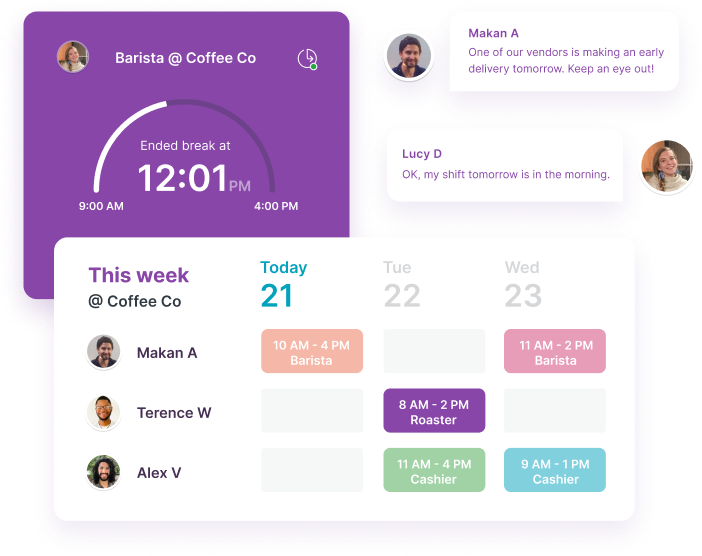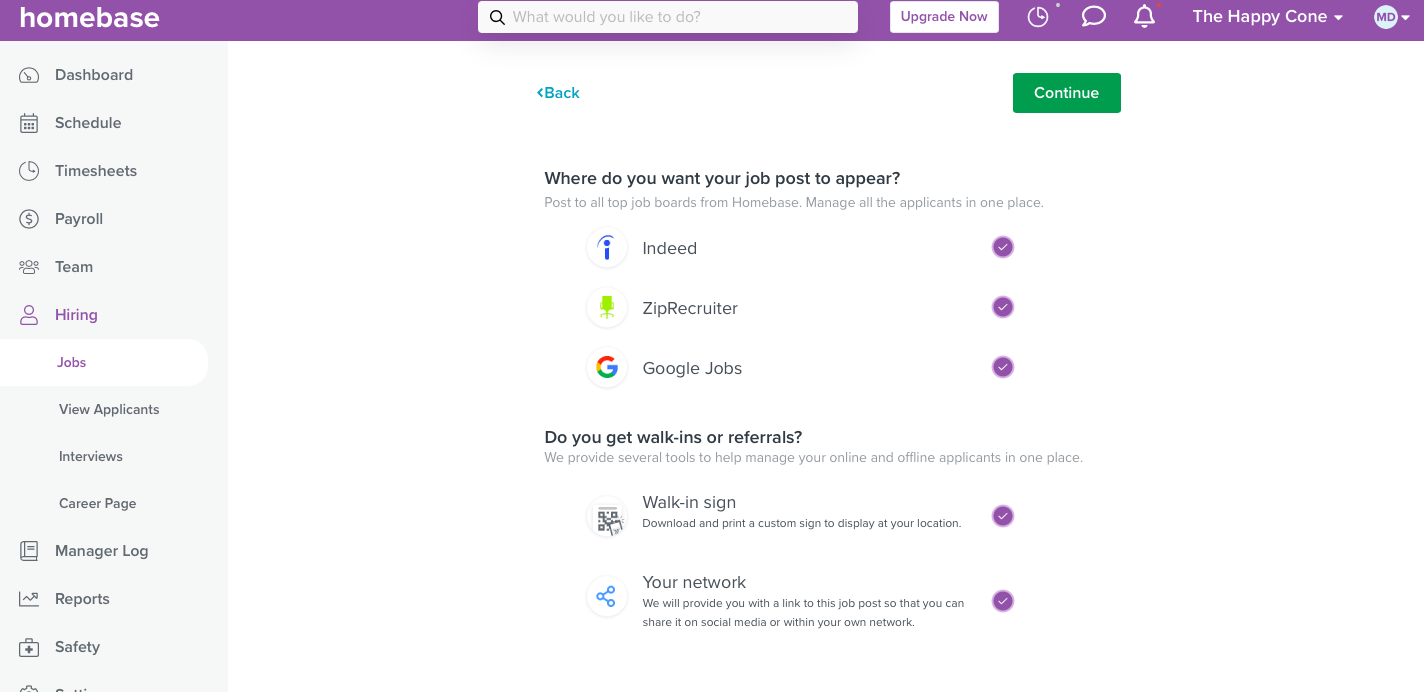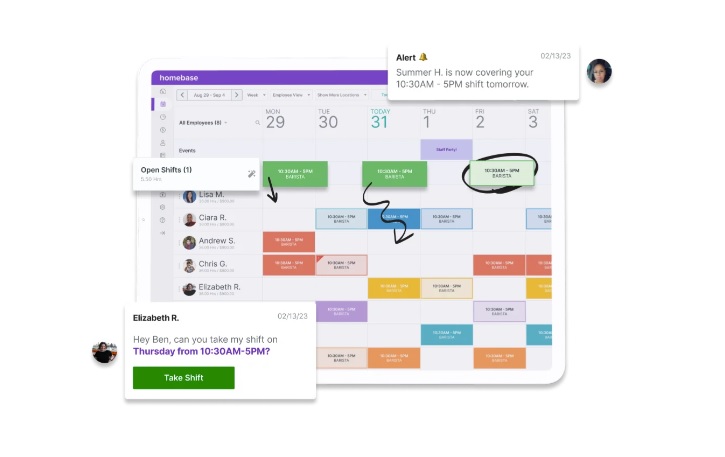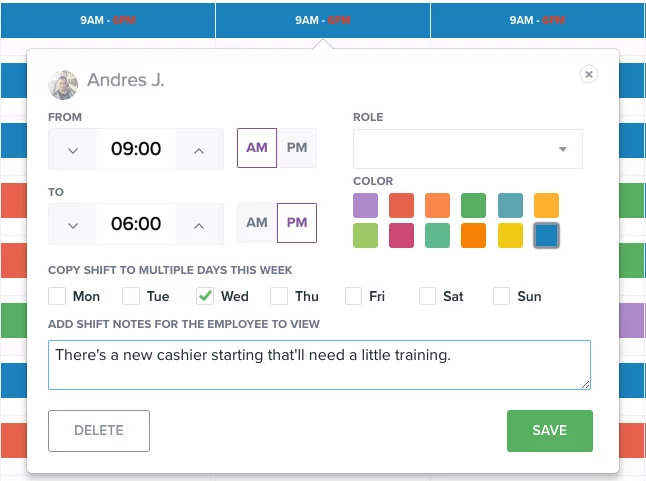Have you set up a social media account for your business only to let it gather digital dust because you’re unsure of the next steps? Or are you curious about the minimal-effort, maximum-impact strategies other small businesses use to shine on social platforms?
Having a social media presence today is almost as fundamental as having a storefront sign. This expectation can feel challenging, especially when you’re dealing with other business responsibilities.
Understanding and utilizing social media doesn’t require you to be a tech whiz or to dedicate countless hours every day. Sometimes, all it takes is a bit of guidance and some tried-and-true tactics. In this article, we’ll look at some accessible and effective tips that can be easily implemented, regardless of your technical know-how, to help increase both your business’s visibility and revenue.
1. Get to know your audience and keep them in mind
Imagine running a trendy coffee shop in a bustling college town. While posting pictures of sophisticated latte art on Instagram might garner likes, that same approach on LinkedIn might fall flat. Why? It’s all about knowing where your audience hangs out and what they’re looking for.
Every social media platform has its unique audience and vibe. Identify where your potential customers are most active. Are they professionals networking on LinkedIn or creatives seeking inspiration on Pinterest?
Start by analyzing who engages with your posts: What age group are they? What posts do they like or share the most? If you find that the majority of your audience, like our college town’s coffee enthusiasts, prefers Instagram, then that’s where your focus should be.
2. Stay consistent with your branding

Your brand is not just a logo or a color scheme; it’s the identity of your business, the promise you’re making to your customers. So, how can you ensure a cohesive brand image across platforms?
Start with a basic branding kit: Tools like Canva make it easy to design brand materials. Create a branding kit that outlines your primary colors, logo variations, fonts, and any other design elements. This way, whether you’re putting out a flier or an Instagram post, there’s a consistent visual thread.
Involve your team: Homebase’s communication features make it effortless to discuss and collaborate, ensuring everyone is on the same page. Reach out and ask if anyone has a flair for design. You’d be surprised how many hidden talents your team might have! A shout-out feature can also be invaluable. If a team member goes the extra mile to help with design or branding efforts, publicly acknowledging them boosts morale and fosters a sense of community.
3. Make social media part of someone’s job

From managing finances to serving customers, each task has its designated expert. So why should social media be any different? According to Sprout’s Advocacy Report, nearly 72% of employees post about their company and believe that it helps them establish long-term goals.
If you’re ready to bring aboard a part-time marketing manager, Homebase’s hiring and onboarding feature can help you to post job openings on leading online job boards such as ZipRecruiter, Indeed, and Google Jobs. But that’s not all. With Homebase, you can actively track applicants and onboard your chosen candidate—all within a unified digital platform.
4. Create a calendar with a variety of content
A content calendar is your social media roadmap, outlining what to post and when and where to post it. By planning, you not only maintain a consistent presence but also allow room for creativity, ensuring your content doesn’t become repetitive.Some days they might be in the mood for an inspiring quote; other days, a behind-the-scenes glimpse, and sometimes, just a well-shot product image. Offering diverse media—from images and videos to polls or quizzes—keeps your audience intrigued and coming back for more.
Here’s a sample weekly social media calendar for a coffee shop on Instagram:
| Day | Content type | Description | Caption/Idea |
| Monday | Image | High-resolution image of the ‘Coffee of the Week’ with a brief description. | “Kickstart your week with our bold, aromatic Coffee of the Week! ☕” |
| Wednesday | Behind-the-
scenes Video |
Video of the barista crafting a latte, showcasing skill, and craftsmanship. | “Craftsmanship in every cup. Watch our barista in action! 🎥 #BaristaLife” |
| Friday | Interactive Poll | “Which is your end-of-week favorite? Cappuccino or Mocha?” | “Friday decisions! Cappuccino or Mocha? Vote now! 🤔” |
| Sunday | Customer Testimonial | Customer spotlight, celebrating your community and shared coffee experiences. | “Nothing warms our hearts like happy customers. Thanks for being part of our journey! ❤️ #CustomerSpotlight” |
5. Motivate customers to create content for you and repost
When customers create content around your products or services, it’s a testament to their satisfaction and connection with your brand. Not only is user-generated content authentic, but it also acts as word-of-mouth promotion in the digital realm.
Here’s how to motivate them:
- Host contests: Announce a monthly photo contest where the best snapshot featuring your product wins a prize. It could be a discount, a free item, or even a feature on your page.
- Use a branded hashtag: Encourage your customers to use a specific hashtag related to your business when they post. This way, you can easily find and showcase their content.
- Acknowledge and thank: Whenever you repost customer content, ensure you credit them. A simple acknowledgment can boost goodwill and encourage more customers to share.
6. Run regular contests and giveaways
From the thrill of participating to the anticipation of winning, contests and giveaways never lose their charm. Plus, for small businesses, it’s a valuable tool to boost engagement, spread brand awareness, and create a buzz.
Why contests work:
- Engagement boost: Contests, by nature, invite interaction. Whether liking, sharing, or commenting, they drive actions on your posts.
- Increased visibility: As more people engage, the algorithm favors your content, and your reach grows organically.
- Community building: Regular participants in your contests often feel a deeper connection to your brand and become loyal advocates.
Example contest ideas:
- Tag-a-friend: Ask followers to tag a friend, and both could stand a chance to win. This helps in reaching a wider audience, as each tag exposes your brand to a potential new follower.
- Photo challenges: Encourage customers to share photos with your products. Not only do you get content for reposting (as discussed in the earlier tip), but it’s also a fun way to showcase real-life uses of what you offer.
- Trivia quizzes: Post a question about your product or industry, and reward correct answers. This keeps followers engaged and educates them about your brand simultaneously.
Clearly mention the starting and ending dates, how winners will be chosen, and when the results will be announced. While grand prizes can be tempting, even small, meaningful rewards can get traction. Think free samples, discount coupons, or branded merchandise.
7. Have team-wide social media brainstorming sessions

Each team member, depending on their role, interacts differently with customers. For example, while the sales team might be adept at identifying potential customer interests, the after-sales team might have a pulse on customer feedback and common queries. These interactions can be a rich source of content ideas, ensuring your posts resonate genuinely with your audience.
But how do you manage these brainstorming sessions, especially when coordinating schedules can be a daunting task? With Homebase’s scheduling feature, managers can easily organize these team-wide sessions. By checking the availability of each member, you can assign a brainstorming “shift”, ensuring everyone’s presence.
If certain team members are regular contributors, you can also create repeating brainstorming sessions, ensuring consistency. Once the session is scheduled, Homebase sends out notifications via mobile app, email, or SMS, keeping everyone informed.
8. Try influencer marketing and cross-promotions
Influencer marketing has surged in popularity as businesses recognize the potential of leveraging individuals with engaged audiences. Not only can influencers introduce your brand to new eyes, but they can also provide an authentic touch, bridging the gap between businesses and consumers.
According to the Influencer Marketing Benchmark Report 2023, here are some key highlights:
- 82% of businesses don’t consider it very difficult to find appropriate influencers, reflecting the growth in available platforms and tools for discovery.
- A significant 60% of influencer marketing relationships are campaign-based. While long-term influencer relationships have seen a rise, brands still majorly lean towards campaign-centric collaborations.
- 57% of respondents deem influencer marketing a scalable tactic in their marketing ecosystem
Influencer marketing’s scalability is one of its prime advantages over traditional methods. For example, if a fashion brand aims to broaden its campaign, it can simply collaborate with more influencers, especially those with significant reach, ensuring the brand message reaches a larger audience.
Also, with cross-promotions, you can collaborate with complementary businesses, introducing your products to a wider yet relevant audience.
9. Check out what your competitors are doing
Ever wondered why a particular competitor’s posts get so much engagement? Dive into their content. Maybe they’ve mastered the art of storytelling, or perhaps they’ve hit the sweet spot in terms of post-timings. By observing, you can glean tactics that resonate with your shared audience and adapt them to your own style.
Here are some actionable steps to help you:
- Identify your top competitors: List businesses that offer similar products or services. These can be direct competitors and those slightly outside your niche but targeting a similar audience.
- Engage with their content: This doesn’t mean just casual scrolling. Really interact with their posts, noting the content that gets the most reactions and engagement.
- Analyze their posting schedule: Consistency is key in social media. If you notice a competitor has a lot of engagement during specific days or times, it might be worth testing those timings for your posts.
- Look for gaps: While emulating successful strategies is helpful, consider what your competitors might be missing. Can you fill that gap? For example, if they’re only sharing images, maybe there’s room for you to engage your audience with videos or polls.
- Stay updated with tools: Platforms like Social Blade or SimilarWeb can give you insights into your competitors’ growth and performance metrics. These tools can offer a more in-depth look beyond the content, like optimal posting times or audience demographics.
10. Prioritize social (and in-person!) listening

Engaging on social media is more than just posting regular updates. It’s about tapping into conversations, understanding the sentiments, and tailoring your approach based on the feedback received.
For example, many customers take to social platforms to voice their opinions, concerns, or even compliments about a brand. When businesses actively listen, they can swiftly respond, ensuring a positive user experience and demonstrating that they value customer feedback.
In-person interactions, often overlooked in today’s digital-heavy world, can provide insights that can reshape a brand’s social media strategy. Imagine an employee at a coffee shop overhearing a group of customers talking about how they wish the shop would post more behind-the-scenes content on their Instagram. Such casual, offline feedback can be pivotal in guiding a brand’s content creation efforts.
Recognizing the importance of these in-person tidbits, tools like Homebase’s shift notes become invaluable. If an employee picks up on a recurring theme or feedback during their shift, they can document it using these shift notes.
This not only ensures the information doesn’t get lost in the daily hustle but also that those handling the brand’s social media are looped in. They can then incorporate this feedback, ensuring the content is both relevant and engaging.
Navigate the marketing landscape with Homebase
Navigating the intricacies of modern business marketing requires a blend of strategic thinking, adaptability, and a knack for genuine connection. It’s about listening intently, responding with empathy, and evolving with your audience’s needs.
While technology and platforms will continuously change, the core principle of understanding and catering to your audience remains timeless. And this is where tools like Homebase shine bright.
Beyond its robust features for scheduling and onboarding, Homebase offers a seamless avenue for real-time team communication. With the team chat, businesses can not only crowdsource brilliant social media ideas but also strengthen team connections, leading to higher retention rates.
Homebase ensures that you craft policies that resonate with your team while also letting you keep a pulse on when and how they’re working. And with our free plan, small businesses can access many of these high-impact features for up to 20 employees at a single location without any cost.
Here’s to smarter, more connected marketing!
FAQs about social media for small businesses
How can social media marketing help my small business?
Social media marketing can help your small business by boosting brand awareness, connecting directly with customers, and driving website traffic. Engaging content fosters loyalty, while targeted ads can efficiently reach potential clients. Real-time feedback offers insights for improvement, and sharing user-generated content can bolster credibility.
What social media pitfalls do I need to be aware of/avoid?
When navigating social media for your business, be aware of these pitfalls:
- Inconsistent posting: Sporadic updates can reduce engagement and trust.
- Ignoring feedback: Neglecting or defensively responding to negative comments damages reputation.
- Off-brand content: Sharing irrelevant or off-brand content can confuse followers.
- Over-promotion: Constantly pushing sales can deter followers from seeking valuable content.
- Failing to engage: Social media is a two-way street; not interacting with your audience misses connection opportunities.\
- Not tracking metrics: Without monitoring performance, you can’t adjust strategies effectively.
What are the basic requirements of an effective social media marketing strategy?
The basic requirements of an effective social media marketing strategy include:
- Clear objectives: Define what you aim to achieve, whether it’s brand awareness, engagement, or sales.
- Target audience insight: Understand who you’re speaking to, their interests, and their behavior.
- Content calendar: Plan and schedule diverse, engaging content consistently.
- Engagement plan: Allocate time to interact, respond, and foster community.
- Branding consistency: Maintain a uniform brand voice, visuals, and messaging across platforms.
- Performance metrics: Monitor key performance indicators to measure success and refine tactics.\
- Crisis management plan: Prepare for potential issues or negative feedback.
How can I make it easier to post consistent content on social media?
You can make it easier to post consistent content on social media by:
- Creating a content calendar: Plan your posts weeks or even months in advance. This helps you visualize a mix of content types and ensures you don’t miss important dates or events.
- Using scheduling tools: Platforms like Hootsuite, Buffer, or Sprout Social allow you to schedule posts across multiple platforms in advance.
- Batching content creation: Dedicate specific days to create multiple posts at once, which can save time and effort in the long run.
- Repurposing content: Turn one piece of content into multiple posts. A blog post can become a video summary, an infographic, or a series of quote graphics.
- Curating relevant content: Share industry news, articles, or other user-generated content that aligns with your audience’s interests.
- Encouraging team involvement: Get ideas and content contributions from different team members to diversify and enrich your content.
